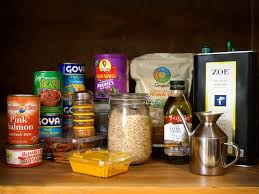Managing Out-of-Date Pantry Items: A Guide to Food Safety and Quality
The Savvy Retiree Digest
Archives
Managing Out-of-Date Pantry Items: A Guide to Food Safety and Quality
SIGN UP FOR OUR NEWSLETTER
Managing Out-of-Date Pantry Items: A Guide to Food Safety and Quality |
Understanding expiration dates and proper storage to minimize waste and ensure safety |
For many home cooks, a well-stocked pantry is a source of both comfort and pride.
However, it's easy to lose track of items, leading to the accumulation of out-of-date pantry items.
Understanding how to manage these items is crucial for maintaining food safety and quality.
Decoding Expiration Dates
Food packaging often features various dates that can be confusing.
Common labels include:
It's important to note that these dates often refer to quality rather than safety.
Most shelf-stable foods are safe to consume after these dates, though they may lose flavor or texture.
Assessing Pantry Items
Regularly auditing your pantry helps identify items that may have surpassed their optimal quality.
Key categories to monitor include:
Spices and Herbs:
Over time, spices and herbs lose their potency.
Ground spices typically maintain their flavor for about six months, while whole spices can last up to a few years.
To test freshness, rub a small amount between your fingers; if the aroma is weak, it's time to replace them.
Flour:
Whole-grain flours contain natural oils that can become rancid over time.
It's advisable to use them within a few months or store them in the refrigerator to extend their shelf life.
White all-purpose flour has a longer shelf life but can develop a stale taste after a year.
Oils and Fats:
Cooking oils can oxidize and become rancid, especially if stored improperly.
To maintain quality, store oils in a cool, dark place and use them within their recommended time frame.
Canned Goods:
While canned foods are designed for long shelf life, they don't last indefinitely.
High-acid foods like tomatoes and fruits are best used within 12 to 18 months, whereas low-acid foods such as meats and vegetables can last two to five years.
Always inspect cans for signs of damage, such as rust, dents, or bulging, and discard any compromised items.
Storage Tips to Extend Shelf Life
Proper storage can significantly extend the life of pantry items:
When to Discard
While many pantry items remain safe past their labeled dates, certain signs indicate it's time to discard them:
By understanding expiration dates and implementing proper storage practices, you can ensure your pantry remains a source of safe and high-quality ingredients.
Regularly reviewing and organizing your pantry not only helps in reducing food waste but also ensures that you're always prepared to create delicious meals. |

